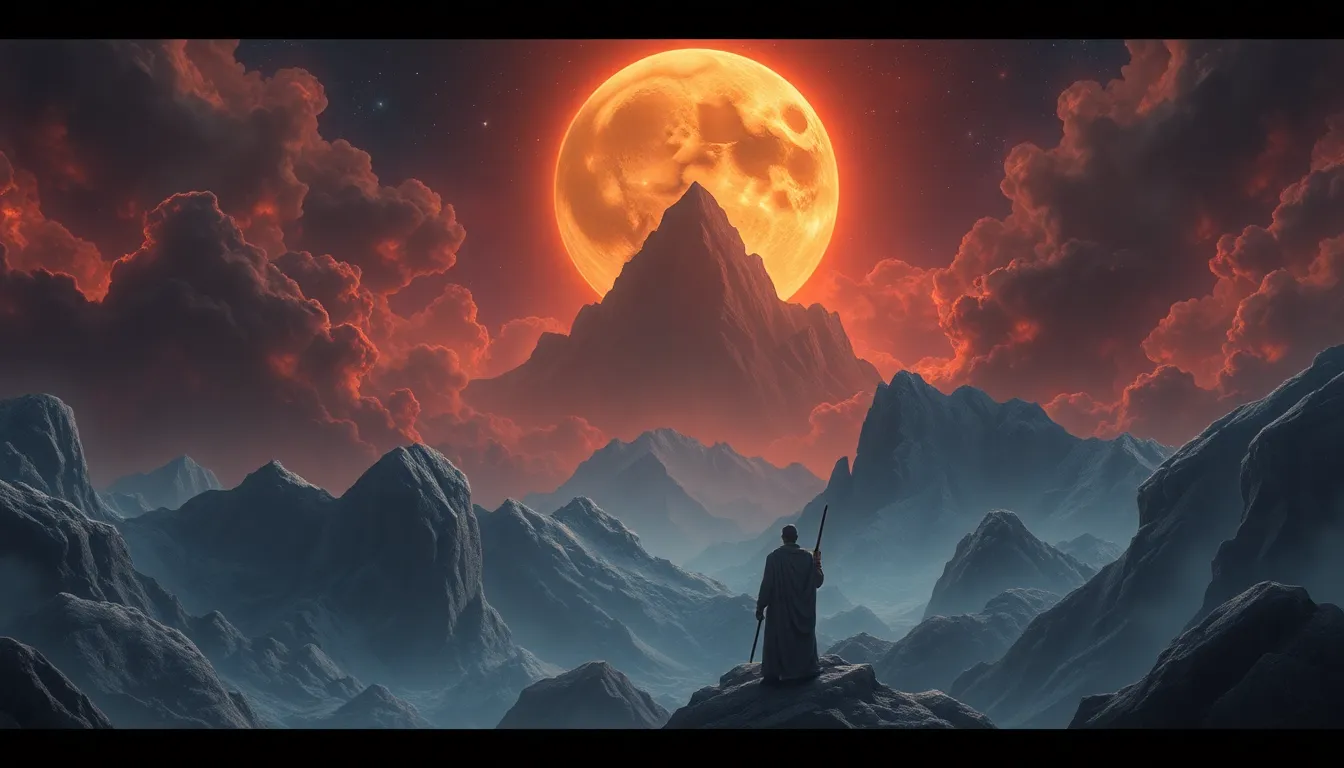When Will the World End? Myths That Have Captivated Generations
Introduction: The End of the World in Human Imagination
The concept of the world coming to an end has fascinated humanity for centuries. From ancient civilizations to modern society, apocalyptic scenarios have captured the imagination of countless individuals. This fascination is not merely a byproduct of fear; it is deeply rooted in cultural narratives, religious beliefs, and psychological inquiries. Understanding these myths and their significance helps us comprehend our relationship with the unknown future.
Historical Context: Ancient Civilizations and Their Predictions
Throughout history, various ancient cultures have expressed their beliefs regarding the end of the world. Notable among these are the Mayans and the Aztecs, who had intricate calendars and prophecies about catastrophic events.
- Mayans: The Mayan civilization is often associated with the idea that their calendar predicted the end of the world in December 2012. This belief was based on misinterpretations of their cyclical calendar system.
- Aztecs: The Aztecs believed in a series of suns, each representing different eras of the world. They expected that their era, the Fifth Sun, would eventually end through cataclysmic events.
These predictions not only shaped the beliefs of these civilizations but also influenced their societal behaviors, rituals, and even their responses to natural disasters.
Religious Doomsday Predictions
Religious texts across various faiths contain prophecies about the end of times. These predictions have often been interpreted in ways that resonate with believers.
- The Bible: The Book of Revelation describes apocalyptic events and the ultimate judgment of humanity. This has led to numerous interpretations and predictions over the centuries.
- The Quran: Islamic eschatology includes beliefs about the Day of Judgment, when all individuals will be resurrected and judged by Allah.
Religious leaders have played a significant role in promoting these narratives, often using them to guide followers’ behaviors and beliefs about morality and salvation.
Astrology and Celestial Events: Signs of the End?
Astrology has historically influenced cultures’ perspectives on apocalyptic scenarios. Many believe that celestial events are omens of impending doom.
- Eclipses: Solar and lunar eclipses have been viewed as significant omens throughout history, often interpreted as signs of divine displeasure.
- Planetary Alignments: Certain alignments of planets are believed by some to foretell catastrophic events on Earth.
These beliefs illustrate the human tendency to seek patterns and meanings in the cosmos, linking them to societal fears of the unknown.
Modern Myths: Y2K, 2012, and Beyond
The 20th and 21st centuries have seen a resurgence of apocalyptic predictions, often driven by technological advancements and societal anxieties.
- Y2K: The turn of the millennium brought widespread fear that computer systems would fail, leading to global chaos. While the event passed without incident, it highlighted modern fears about technology.
- 2012: The belief that the Mayan calendar predicted the end of the world on December 21, 2012, led to global panic and preparation for apocalypse, even though it was based on misinterpretations.
These modern myths reflect the changing nature of societal anxieties and highlight how each generation creates its own narratives regarding the end times.
The Role of Technology in Apocalyptic Fears
Advancements in technology have significantly contributed to contemporary apocalyptic fears. The rapid pace of scientific innovation often provokes anxiety about unforeseen consequences.
- Artificial Intelligence: Concerns about AI surpassing human intelligence and leading to catastrophic outcomes have become prevalent in discussions about the future.
- Social Media: Platforms like Twitter and Facebook can amplify doomsday theories, allowing misinformation to spread rapidly and influencing public perceptions.
These technologies not only shape our understanding of the world but also contribute to our fears about potential catastrophic futures.
Environmental Catastrophes: A Contemporary Concern
In recent years, climate change has emerged as a significant concern, often framed as an impending apocalypse. The portrayal of environmental crises has sparked both fear and activism.
- Climate Change: Many view climate change as a direct threat to humanity’s survival, with predictions of rising sea levels, extreme weather, and mass extinctions.
- Scientific Reality vs. Myth: While the science behind climate change is robust, media portrayals can sometimes exaggerate fears, creating a mythologized narrative around the end of the world.
This duality emphasizes the need for informed discussions about environmental issues, balancing scientific facts with societal fears.
Cultural Reflections: The End of the World in Literature and Film
Popular culture has long reflected and shaped apocalyptic myths, providing a medium for exploring humanity’s fears and hopes.
- Literature: Books like “The Road” by Cormac McCarthy and “1984” by George Orwell delve into dystopian futures, exploring the consequences of societal collapse.
- Film: Movies such as “Mad Max” and “Children of Men” depict post-apocalyptic worlds, influencing public perceptions and fears about the end times.
These narratives serve as cautionary tales, echoing cultural anxieties while also providing a space for reflection and discussion on the human condition.
Psychological Aspects: Why We Are Drawn to Doomsday Scenarios
The fascination with doomsday scenarios is rooted in psychological factors that drive human behavior.
- Fear: The fear of the unknown and existential threats can lead individuals to seek explanations or narratives that provide a semblance of understanding.
- Hope: Some people find hope in apocalyptic narratives, believing that the end of one world could lead to the beginning of a better one.
These psychological aspects highlight the complexity of human emotions surrounding the concept of the end, revealing a blend of dread and hope.
Conclusion: The End is Just the Beginning?
As society continues to evolve, so too do our apocalyptic myths. Each generation will reinterpret and reshape these narratives based on contemporary fears and realities. Understanding the origins and implications of these beliefs allows us to approach doomsday predictions with critical thinking and a grounded perspective.
Rather than succumbing to fear, we can use these narratives to inspire action, reflection, and a deeper understanding of our place in the world. Ultimately, the end may not signify the conclusion but rather the opportunity for renewal and transformation.




